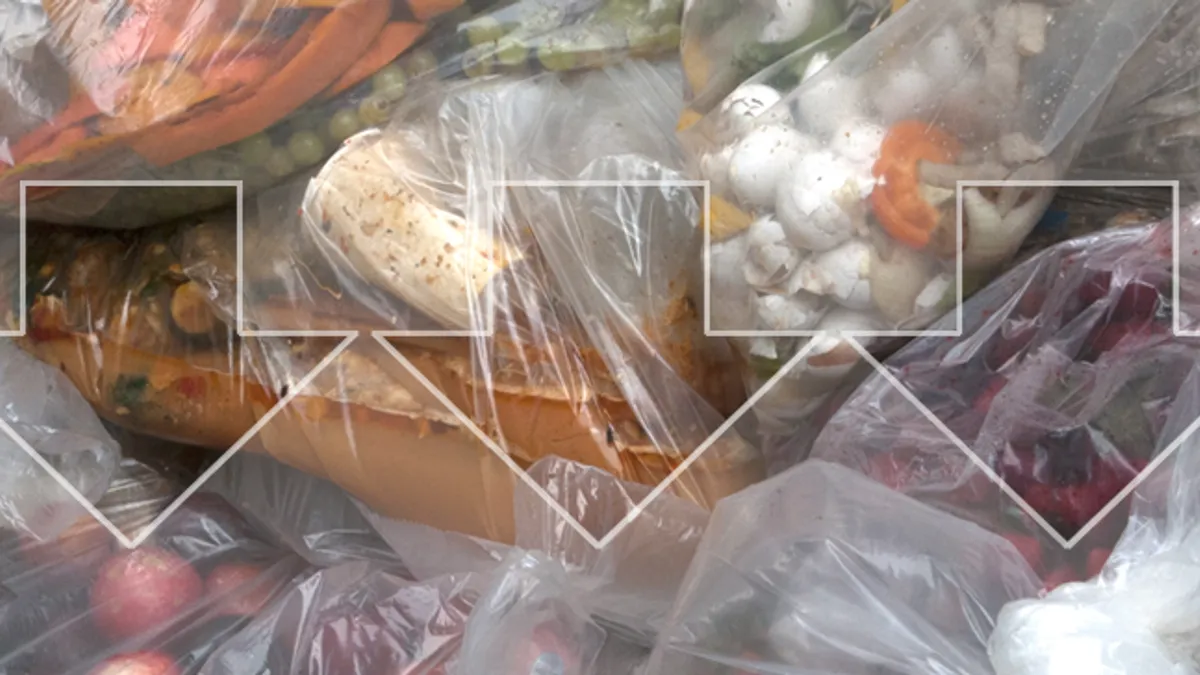- Up to 5% of a grocer's sales are lost to shrink in perishables as over-inventoried stores are forced to throw out spoiled and unsaleable products.
- Shoppers make purchasing decisions because the weather is affecting their meal preferences or the forecasted weather is affecting their upcoming plans, activities, and events. Sales are typically most sensitive to weather changes in produce, meat, and other fresh departments.
- Weather-driven demand analytics reduce shrink/waste costs by 10-35% when replenishment volumes at the critical item/store/day level are adjusted for stores where unfavorable conditions will lead to reduced sales.
In a quickly evolving landscape in which the move to online purchasing is accelerating ever faster, the fresh departments around the perimeter of the store remain a key asset and growth vehicle for supermarkets. Research shows that perimeter department sales growth is two to three times the rate of center of the store, so it is an area food retailers are focused on and where the desire to avoid lost sales is the strongest. And perishables continue to be one of the primary reasons a shopper wants to go into a store, with quality, selection, and availability being key differentiators that drive loyalty to a specific store or retail chain.
The challenge, as always, is finding the right balance between having enough product on the shelves to meet customer expectations without needlessly increasing inventory costs. With the additional factor of shrink in the fresh equation, getting this balancing act is even more important.
Profiting on Perishables: Shrinking Shrink with a Better Demand Forecast
Grocery retailers generally acknowledge that the weather has an impact on consumer demand, affecting everything from overall traffic levels to the sales of specific products. Ahead of a warm and pleasant weekend, a shopper may plan to barbeque and put steaks, burgers, or hot dogs in their cart. Hot and humid conditions may make salads or fresh fruit more appealing. A turn towards chillier conditions may mean that ingredients for soups or stews find their way onto the weekly shopping list (while at the same time, the previously mentioned products are left on the shelf).
Recognizing that the weather matters because it changes consumer shopping behavior is an important "start", but improving profit can only be achieved when weather impacts – both negative and positive - are quantified and leveraged to make demand forecasts more accurate.
When grocers integrate Planalytics' weather-driven demand analytics into replenishment systems – whether traditional or ML/AI-based solutions - and volumes are either adjusted higher to take advantage of an upcoming sales spike or adjusted lower to account for a dip in sales, the profit impact is immediate, measurable and significant – and requires no weather impact interpretation on their part.
For example, one grocery chain that works with Planalytics was seeing elevated shrink costs in pre-packaged salads when unfavorable conditions depressed demand.
- Prior to incorporating weather analytics, stores could end up with too much inventory in one week because replenishment forecasts based volumes on sales trends that had been strong in recent weeks or the prior year.
- By ingesting weather-driven demand analytics into their replenishment system, volumes were trimmed for stores that would be experiencing a negative weather impact.
- In one week for just this one category, the retailer was able to reduce perishable shrink by over $110,000 without hurting availability and risking lost sales.
It is important to note that using raw meteorological forecast data is not sufficient. While some businesses initially try this approach, it quickly becomes apparent how challenging it is to effectively integrate temperatures, precipitation amounts, etc. into demand forecasts, replenishment solutions, and data warehouses. Even today's ML/AI technologies that rely on weather data alone do not come close to matching the accuracy improvement generated by weather-driven demand analytics.
The opportunity to grow profit is very real and very achievable. When weather-driven demand adjustments are implemented at scale across hundreds of categories around a store's various perishable departments, the bottom line returns add up quickly. Utilizing weather analytics to proactively optimize inventories as demand patterns change presents grocers with an effective and endlessly repeatable tactic (after all, the weather never stops changing) for shrinking shrink in fresh categories.
"Waste Not, Want Not" – Using Weather Analytics to Improve KPIs
Higher customer satisfaction and loyalty levels, increasing sales and market share in high margin categories, reducing shrink costs on short shelf-life products, and other key corporate objectives can be served by better understanding and operationally addressing the weather's influence on consumer demand.
Analyzing past sales to understand exactly when, where, and how much the weather affects a product's sales is the starting point. Going forward, knowing how weather-sensitive sales are for any given product by location and time period provides replenishment processes and systems with informed adjustments that correctly balance availability with shrink.
These demand forecast accuracy improvements ultimately translate into lower perishable shrink costs:
- For fruit, typical waste savings are 10% to 25%
- For vegetables, typical waste savings are 10% to 30%
- For meats, typical waste savings are 20% to 35%
Grocers would be hard pressed to find a more direct and rapid way than the incorporation of weather analytics to improve KPIs tied to optimizing store-level fresh inventories.
Learn more by downloading Planalytics' Factoring the Weather into Grocery Demand Shifts.










